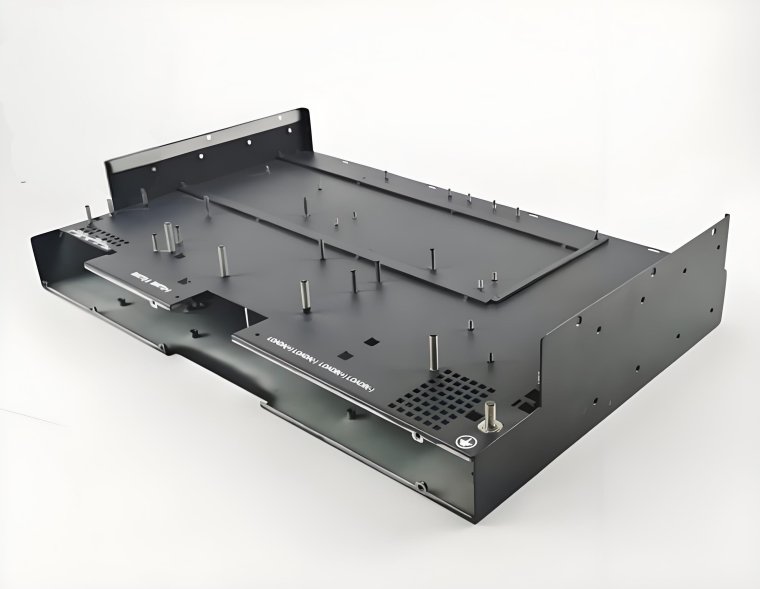Sheet metal fabrication is a fundamental process in modern manufacturing, enabling the production of durable, high-precision components for various industries. From automotive and aerospace to electronics and medical devices, sheet metal fabrication plays a critical role in shaping the products we use every day.
At Linkwork Precision Machinery, we specialize in precision machining and sheet metal fabrication, offering custom CNC machining solutions tailored to our clients’ needs. Our expertise spans CNC turning, CNC milling, precision automatic lathe machining, and sheet metal manufacturing, serving industries such as automotive, aerospace, medical, automation, and renewable energy.
In this guide, we’ll explore the key processes, techniques, and applications of sheet metal fabrication to help you understand its importance and how it can benefit your business.

1. What is Sheet Metal Fabrication?
Sheet metal fabrication is the process of cutting, bending, and assembling metal sheets to create complex structures and components. This process allows manufacturers to transform raw metal sheets into precise parts used in various industries.
Common materials used in sheet metal fabrication include:
-
Stainless Steel – Corrosion-resistant and durable, ideal for medical and food-grade applications.
-
Aluminum – Lightweight and strong, commonly used in aerospace and automotive industries.
-
Carbon Steel – Versatile and cost-effective, suitable for structural applications.
-
Copper & Brass – Highly conductive materials used in electrical and decorative applications.
2. Key Processes in Sheet Metal Fabrication
A. Cutting
Cutting is the first step in sheet metal fabrication, where large sheets are reduced to specific shapes and sizes. Common cutting methods include:
-
Laser Cutting – Uses high-powered lasers for precise and clean cuts with minimal material waste.
-
Plasma Cutting – Ideal for cutting thicker materials quickly and efficiently.
-
Water Jet Cutting – A non-thermal cutting method that maintains material integrity.
-
CNC Punching – Uses a punch press to create holes and cutouts with high accuracy.
B. Bending
Bending transforms flat metal sheets into 3D structures by applying force to create desired angles and shapes. This is achieved using:
-
Press Brake Bending – The most common method for creating precise bends.
-
Roll Bending – Used for producing curved or cylindrical shapes.
C. Welding & Assembly
After cutting and bending, components are assembled through various welding and fastening techniques:
-
TIG & MIG Welding – Common welding methods for joining metal parts.
-
Spot Welding – Ideal for thin sheet metal applications.
-
Riveting & Bolting – Used for non-welded assemblies.
D. Finishing
To enhance durability, aesthetics, and corrosion resistance, fabricated parts undergo finishing treatments such as:
-
Powder Coating – Provides a durable, high-quality finish.
-
Anodizing – Enhances aluminum parts’ corrosion resistance.
-
Electroplating – Adds a protective metallic coating to surfaces.
3. Advanced Techniques in Sheet Metal Fabrication
At Linkwork Precision Machinery, we employ advanced fabrication technologies to achieve high precision and consistency in metal part production. Some of these techniques include:
✔ CNC Machining Integration – Combining CNC milling and turning with sheet metal fabrication for complex part production.
✔ Automated Laser Cutting – Ensuring high-speed, high-accuracy cutting with minimal material waste.
✔ Precision Bending Simulation – Using software to predict bending results before actual fabrication.
✔ Custom Prototyping – Developing small-batch prototypes before full-scale production.
These innovations allow us to provide high-quality custom sheet metal solutions tailored to various industries.
4. Applications of Sheet Metal Fabrication
Sheet metal fabrication is widely used across industries, including:
-
Automotive & Motorcycle Manufacturing – Fabricated metal components are essential in vehicle frames, panels, and exhaust systems.
-
Aerospace & Defense – Aircraft components, enclosures, and structural parts require precise metal fabrication.
-
Medical & Healthcare Equipment – High-precision enclosures and surgical tools are manufactured using sheet metal fabrication.
-
Electronics & Automation – Custom enclosures, brackets, and housings for electronic devices.
-
Renewable Energy – Metal structures used in solar panels, wind turbines, and energy storage systems.
With Linkwork Precision Machinery’s expertise, we deliver high-performance metal components that meet the strict quality standards of these industries.
5. Why Choose Linkwork Precision Machinery for Sheet Metal Fabrication?
As a trusted precision machining and sheet metal fabrication provider, Linkwork Precision Machinery offers:
✔ Advanced CNC machining capabilities for precision metal parts
✔ Custom sheet metal solutions tailored to industry-specific needs
✔ High-quality materials and surface treatments for enhanced durability
✔ Quick turnaround times with efficient production processes
✔ Strict quality control to ensure consistent accuracy in all projects
We are committed to providing cost-effective and high-performance metal fabrication services to meet the growing demands of modern industries.
Conclusion
Sheet metal fabrication is a versatile and essential process in today’s manufacturing landscape. Understanding the key fabrication techniques and applications can help businesses choose the right solutions for their needs.
At Linkwork Precision Machinery, we combine cutting-edge technology, expert craftsmanship, and a customer-focused approach to deliver high-quality sheet metal components for a wide range of industries.
www.szlinkwork.com
Shenzhen Linkwork Precision Machinery Co., Ltd.